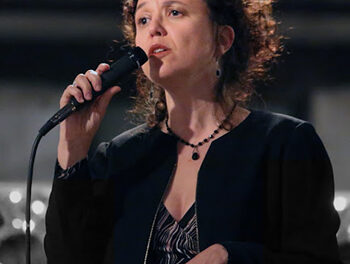In an early bow to the holiday season, the Cape Fear Chorale offered a program devoted entirely to the music of John Rutter, an English composer who has been producing religious choral works since the 1970s. This was a concert for basking in the simple pleasures of the holiday spirit; with the exception of the larger-scale Movement 1 from Rutter’s Magnificat, all of the pieces were melodious carols. The ensemble was led by Jerry Cribbs, one of the Cape Fear area’s distinguished choral conductors; it was accompanied by a chamber orchestra consisting of some of the excellent Wilmington musicians often heard in performances around town.
The opening Magnificat movement began with a brightly-colored sound from the instruments. This sound turned out to be shared by a number of the pieces. The spirited start was contrasted with a lyrical middle section. The tone came over well in the modestly-sized Grace Methodist Church where the acoustics are quite clear, even, surprisingly, almost dry. The chorus, which was singing from behind the altar’s proscenium, had a somewhat subdued sound. Nonetheless, the words, benefitting from well-honed diction, were clear. Entrances, guided by precise cuing, were tight. A peculiarity was that the conductor’s beat appeared to retain the same size and rhythmic character in both the energetic and flowing sections of the piece.
A dozen carols followed this work, perhaps suggestive of the twelve days of Christmas. The first, “Jesus Child”, like the Magnificat, began with a bright instrumental sound; it came over as a cross between Broadway and gospel. The rhythms, cleanly highlighted by the chorus, matched that gospel quality. The second, the a capella “I Wonder as I Wander”, began with a nice touch: a soloist singing from the rear balcony. Her line, while not always as secure in pitch as it was with the group as a whole, was stereophonically and beautifully underlayed by the chorus. The third, “Angel’s Carol,” was redolent with the sounds of film music, both in the harmony and the instrumentation. This populist style appears to be a characteristic of Rutter’s music. Film, Broadway, and gospel rubbed shoulders frequently in the course of the program.
A highlight for the audience was “Joy to the World.” In the fourth verse, the conductor asked the audience to stand and sing with the chorus. In this number, the sound of the chorus opened out more than at any previous point, achieving an extroverted, triumphant tone. The same quality graced the concluding “Rejoice and Be Merry.”
For this listener, settings by another composer would have provided desired variety. Rutter’s music is attractive and, for Christmas songs, a bit out of the ordinary at times. Yet it is also conservative and appears to have changed little in the thirty years of composition represented in the program. That said, the performances were almost all very successful. The tight rhythm and focused pitch of the chorus revealed an expert conductor to whom the group responds well. The Chorale has its own expressive leanings, as they phrased up and down even when the conductor’s beat didn’t delineate high points in the lines. If Christmas has been rung in along with Thanksgiving, this was an appealing welcome.











